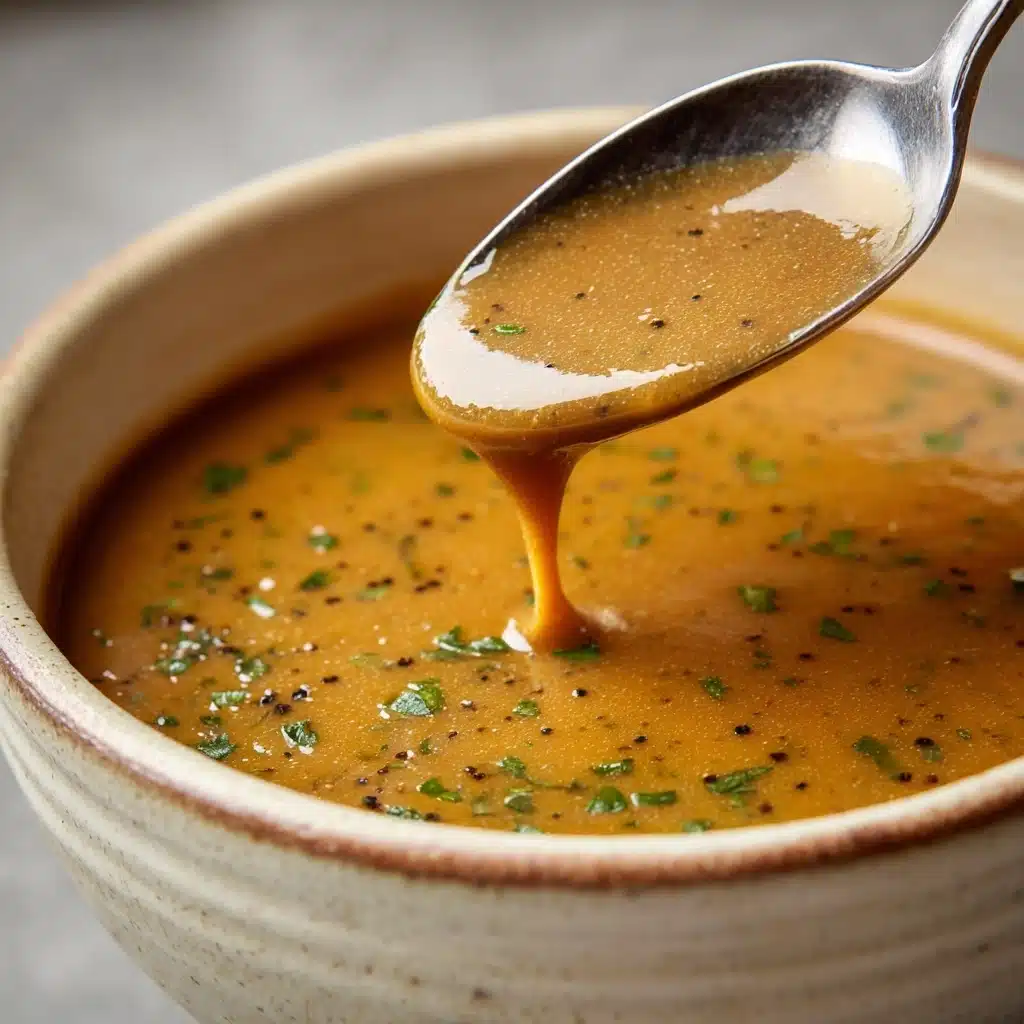Classic Greek Salad Dressing Recipe
If you’ve ever fallen in love with the bright, briny punch of a traditional village salad, you know there’s something magical at its heart: Classic Greek Salad Dressing. This recipe brings that zesty Mediterranean spirit right to your kitchen, bursting with flavors from fruity olive oil, tangy vinegar, earthy oregano, and a vivid splash of lemon. With just a handful of pantry staples and five minutes, you can whip up a dressing that instantly transforms crisp veggies, grains, or grilled dishes—making every bite sing with sunshine and simplicity.

Ingredients You’ll Need
This Classic Greek Salad Dressing gets its unforgettable depth and character from reliable, straightforward ingredients—each one pulling its weight in both flavor and vibrancy. Gather these kitchen must-haves and get ready to discover how they create something truly special together!
- Extra virgin olive oil: Choose the best quality you have for a rich, fruity base that makes the dressing luxuriously smooth.
- Red wine vinegar: Adds the essential bite and zing, instantly waking up your greens and veggies.
- Dijon mustard: Not only brings a gentle tang, but also helps emulsify the dressing for that perfectly silky texture.
- Dried oregano: Classic and unmistakable—this herb delivers an earthy, unmistakably Greek aroma.
- Fresh garlic: A single clove goes a long way, adding warmth and depth without overpowering the blend.
- Salt: Draws out all the other flavors and enhances everything it touches—don’t skimp!
- Black pepper: Just the right amount of subtle heat for balance and finish.
- Lemon juice: Brings vibrant acidity and a sunshiny freshness that ties it all together.
How to Make Classic Greek Salad Dressing
Step 1: Gather and Prep Your Ingredients
Start by setting out all your measured ingredients so they’re ready to go. Mince the garlic finely—fresh garlic makes a big difference—and juice your lemon. Having everything ready means mixing your Classic Greek Salad Dressing is a breeze.
Step 2: Combine the Ingredients
In a small bowl or a clean mason jar, add your olive oil, red wine vinegar, Dijon mustard, dried oregano, minced garlic, salt, black pepper, and that fresh squeeze of lemon juice. The order isn’t crucial, but adding the liquid ingredients first helps incorporate the seasonings better.
Step 3: Whisk or Shake
If you’re using a bowl, whisk everything together vigorously until you see the oil and vinegar come together in a beautifully creamy, golden dressing. If you’re using a jar, simply screw on the lid and shake with enthusiasm—this is when that Classic Greek Salad Dressing starts to shine with its signature texture.
Step 4: Taste and Adjust
Give the dressing a quick taste. Want it zestier? Add a squeeze more lemon. Need a touch of sweetness to balance the acidity? A tiny drizzle of honey (totally optional) does wonders. If spice is your thing, a pinch of crushed red pepper flakes makes the flavors pop even more.
Step 5: Use or Store
Your Classic Greek Salad Dressing is ready! Pour it over crisp greens, toss with cucumbers and tomatoes, or drizzle over grilled veggies. If you’re making it ahead, store it in the fridge for up to a week—just make sure to shake it well before each use, as the oil can naturally separate from the acids.
How to Serve Classic Greek Salad Dressing

Garnishes
Finish your salad with a flourish by topping it with extra crumbled feta cheese, a few fresh oregano leaves, or a sprinkle of toasted pine nuts. These little garnishes elevate both the look and flavor, making every forkful even more irresistible with the Classic Greek Salad Dressing draping every bite.
Side Dishes
This dressing doesn’t only shine on Greek salad! Try serving it alongside warm pita bread, roasted potatoes, or grilled chicken. You’ll find the savory tang turns up the flavor on nearly anything, pulling double duty as the perfect dip or marinade.
Creative Ways to Present
If you’re entertaining, serve the Classic Greek Salad Dressing in a pretty carafe or small mason jars for each guest to shake and pour their own. For a fun twist, drizzle it over grain bowls or use as a finishing sauce on grilled vegetable skewers or seafood. It even dazzles over a simple chickpea salad or as the star of a pasta salad.
Make Ahead and Storage
Storing Leftovers
Any leftover Classic Greek Salad Dressing keeps well in an airtight container or jar in your refrigerator for up to a week. The flavors deepen as they mingle, so sometimes it tastes even better the next day. Just be sure to give it a good shake or whisk before serving, as oil naturally separates from the acids over time.
Freezing
While most vinaigrettes aren’t ideal for freezing, if you absolutely need to, you can preserve this Classic Greek Salad Dressing for up to a month in the freezer. Thaw it overnight in the fridge, then whisk or shake vigorously to reincorporate the ingredients—just keep in mind the texture may change slightly.
Reheating
No reheating required here! But if your olive oil solidifies in the fridge (totally normal), just let the dressing sit at room temperature for about 15–20 minutes, then shake or stir well. This brings it right back to creamy, pourable perfection.
FAQs
Can I use fresh oregano instead of dried?
Absolutely! Fresh oregano brings a brighter, slightly different flavor to Classic Greek Salad Dressing. Use about double the amount, chop it finely, and add just before tossing to preserve its vibrant color and aroma.
Is there a substitute for red wine vinegar?
If you’re out of red wine vinegar, try apple cider vinegar or white wine vinegar—both will keep the dressing lively and tangy, though each adds its own nuance. Balsamic is a bit too sweet for this Classic Greek Salad Dressing but can work in a pinch for a new twist.
How can I make this dressing vegan?
This Classic Greek Salad Dressing is already naturally vegan, as long as your Dijon mustard is certified vegan (sometimes it contains honey). Double-check your ingredients and you’re all set!
What if I don’t have Dijon mustard?
You can use any smooth, mild mustard as a substitute, though Dijon is preferred for its mild tang and smooth texture. Even a grainy mustard can work, giving you a rustic version of Classic Greek Salad Dressing with lovely little bursts of flavor.
Can I use this dressing as a marinade?
Definitely! Classic Greek Salad Dressing makes an outstanding marinade for chicken, shrimp, or even firm veggies like zucchini or mushrooms. Just pour over your protein or vegetables and let the flavors soak in for at least 30 minutes before grilling or roasting.
Final Thoughts
There’s so much joy in making your own Classic Greek Salad Dressing—it’s wonderfully easy, endlessly versatile, and guaranteed to brighten every salad or side. Give this recipe a try and bring the sparkle of a Mediterranean summer to your table, no matter the season!
Print
Classic Greek Salad Dressing Recipe
- Total Time: 5 minutes
- Yield: 6 servings 1x
- Diet: Vegetarian
Description
This Classic Greek Salad Dressing is a flavorful and versatile addition to any salad. With a perfect balance of acidity, herbs, and richness from the olive oil, this dressing is sure to elevate your greens to a new level of deliciousness.
Ingredients
- 1/2 cup extra virgin olive oil
- 3 tablespoons red wine vinegar
- 1 teaspoon Dijon mustard
- 1 teaspoon dried oregano
- 1 clove garlic, minced
- 1/2 teaspoon salt
- 1/4 teaspoon black pepper
- Juice of half a lemon (about 1 tablespoon)
Ingredients:
Instructions
- In a small bowl or jar, combine olive oil, red wine vinegar, lemon juice, Dijon mustard, oregano, garlic, salt, and pepper.
- Taste and adjust seasoning as needed.
Whisk or shake vigorously until well emulsified.
Use immediately or store in the refrigerator for up to one week.
Shake well before each use.
Notes
- For a bolder flavor, add a pinch of crushed red pepper flakes or a dash of honey for balance.
- This dressing also works well as a marinade for chicken or vegetables.
Notes:
- Prep Time: 5 minutes
- Cook Time: 0 minutes
- Category: Dressings & Sauces
- Method: No-Cook
- Cuisine: Greek
Nutrition
- Serving Size: 2 tablespoons
- Calories: 130
- Sugar: 0 g
- Sodium: 115 mg
- Fat: 14 g
- Saturated Fat: 2 g
- Unsaturated Fat: 11 g
- Trans Fat: 0 g
- Carbohydrates: 1 g
- Fiber: 0 g
- Protein: 0 g
- Cholesterol: 0 mg






